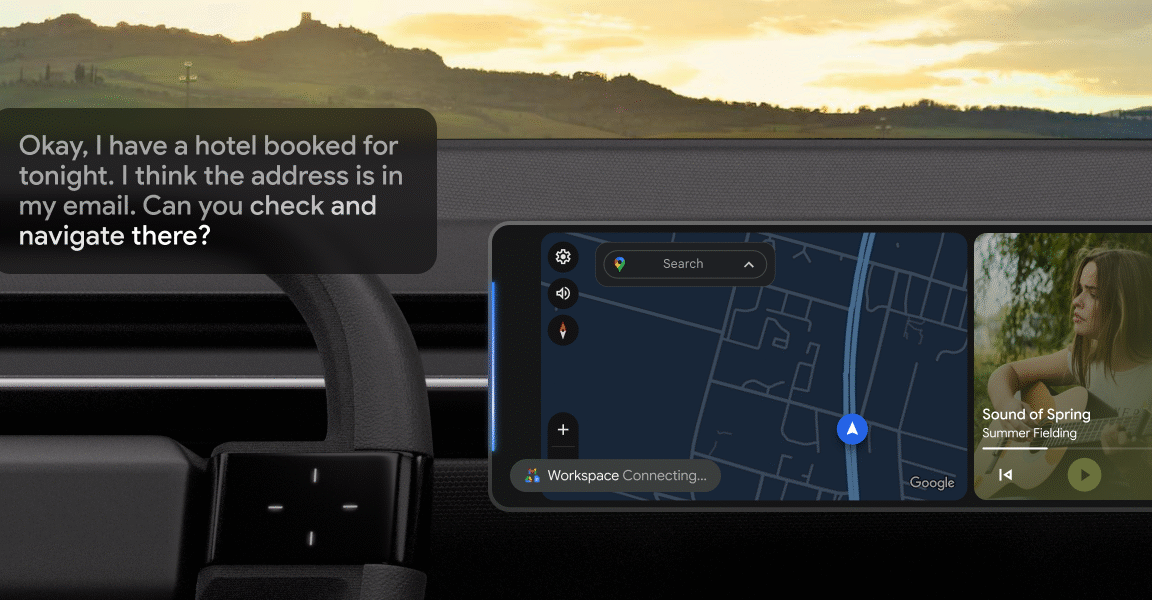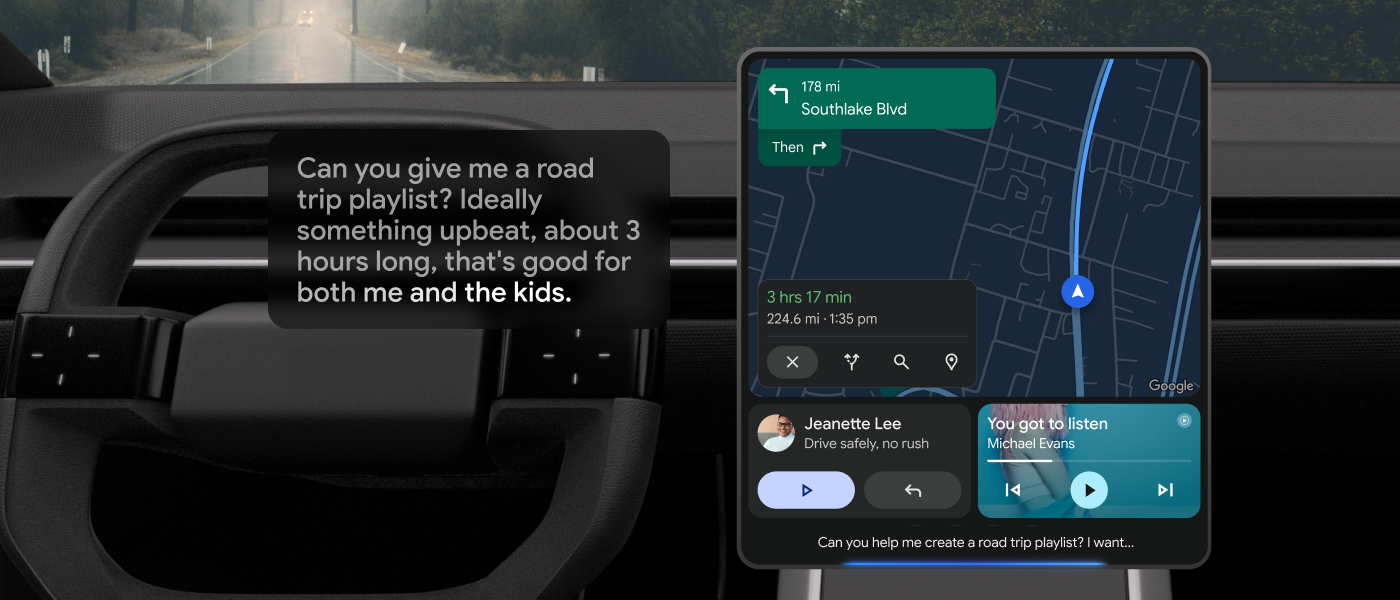
Credit: Google
Google’s platform for casting audio and navigation apps from a smartphone to a car’s infotainment system beat Apple’s to market by a good while, but that headstart has not always kept Android Auto in the lead ahead of CarPlay. But an upgrade rolls out today—provided you already have Gemini on your phone, now it can interact with you while you drive.
What has sometimes felt like a hands-off approach by Google toward Android Auto didn’t reflect an indifference to making inroads into the automotive world. Apple might have its flashy CarPlay Ultra that lets Cupertino take over the look and feel of a car’s digital UI, but outside of an Aston Martin, where will any of us encounter that?
Meanwhile the confusingly similarly named Android Automotive OS—a version of Android developed to run with the kind of stability required in a vehicle as opposed to a handheld—has made solid inroads with automakers, and you’ll find AAOS running in dozens of makes from OEMs like General Motors, Volkswagen Group, Stellantis, Geely, and more, although not always with the Google Automotive Services—Google Maps, Google Play, and Google Assistant—that impressed us back in 2021 when we drove the original Polestar 2.

Can you imagine the playlist you’d get if you asked Grok to do the same thing in a Tesla?
Credit: Google
In fact, Android Auto hasn’t been that neglected by Google. It got a big redesign in 2019, then support for a much wider array of infotainment screen sizes and shapes in 2023. But it took a couple of years after its appearance on smartphones for the hands-free “OK Google” assistant to be able to cast itself to your dashboard—arguably one of its most useful applications, since it allows the driver to keep their eyes on the road and their hands on the wheel while changing the temperature or setting the navigation or playing media.
Now it’s “Hey Google” not “OK Google” to trigger the assistant, which had started feeling a little left behind in terms of natural language processing and conversational AI to other OEM systems—sometimes even AAOS-based ones—that used solutions like those from Cerence running on their own private clouds.
Gemini
Going forward, “Hey Google” will fire up Gemini, as long as it’s running on the Android device being cast to the car’s infotainment system. In fact, we learned of its impending if unspecified arrival a couple of weeks ago, but today is the day, according to Google.
Now, instead of needing to know precise trigger phrases to get Google Assistant to do what you’d like it to do, Gemini should be able to answer the kinds of normal speech questions that so often frustrate me when I try them with Siri or most built-in in-car AI helpers.
For example, you could ask if there are any well-rated restaurants along a particular route, with the ability to have Gemini drill down into search results like menu options. (Whether these are as trustworthy as the AI suggestions that confront us when we use Google as a search engine will need to be determined.) Sending messages should supposedly be easier, with translation into 40 different languages should the need arise, and it sounds like making playlists and even finding info on one’s destination have both become more powerful.
There’s even the dreaded intrusion of productivity, as Gemini can access your Gmail, calendars, tasks, and so on.

Google Gemini is coming to all Polestar models.
Credit: Polestar
Gemini is also making its way into built-in Google automotive environments. Just yesterday, Polestar announced that Gemini will replace Google Assistant in all its models, from the entry-level Polestar 2 through to soon-to-arrive machines like the Polestar 5 four-door grand tourer.
“Our collaboration with Google is a great example of how we continue to evolve the digital experience in our cars. Gemini brings the next generation of AI voice interaction into the car, and we’re excited to give a first look at how it will enhance the driving experience,” said Polestar’s head of UI/UX, Sid Odedra.

-
 C114 Communication Network
C114 Communication Network -
 Communication Home
Communication Home


